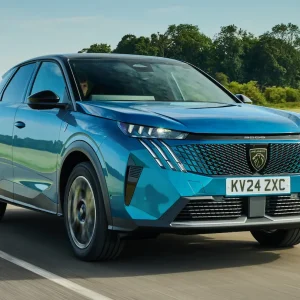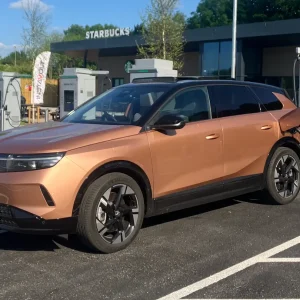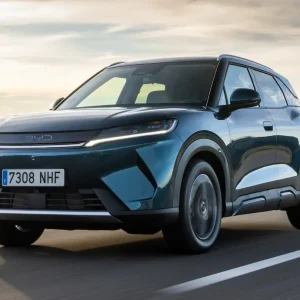Dare I say it, but the Mk3 Kia Picanto might be in danger of launching with a minor identity crisis. On the one hand the European marketing team is keen to stress the city car is not “go-faster”, but rather about “ease” and being “pleasant to drive” – including a small (9.4m) turning circle – but then gets all excited about a sporty new GT trim with red exterior grille and side accents and chrome-tipped exhausts. It’s a subjective business, but for a car whose raciest engine can only manage 0-62mph in 12 seconds, perhaps the go-faster looks are a tad overstated?
According to Kia’s own research, its A-segment customers – 62% female, 82% with no kids – aren’t as interested in performance as bigger car drivers. Still, Kia’s UK CEO Paul Philpott reckons the GT trim will take 25% of sales, so maybe some of these customers – Kia sees two types, first-car buyers in their 20s and second-car buyers in their 50s – want more ‘show than go’ than they let on via market research.
Engine-wise, the 67hp 1.0 (64.2mpg and 101g/km of CO2) and 84hp 1.2 petrols (61.4mpg and 106g/km) are each set to take 40% of sales. Kia suggests headline figures lower than that – 70.6mpg and 89g/km – but that’s only with stop/start, which is not being offered as an option in the UK, and all UK Picantos will have five seats as standard (and higher emissions). A 100hp 1.0 turbo petrol due in the autumn will account for the final 20%, which, to counter an earlier point, should feel more ‘go-faster’.
In total, Philpott wants to sell 14,000 UK Picantos in a full year (last year Kia sold 13,000) and expects a fifth to go to fleets – with courtesy cars, dealer demos and public sector being major outlets.
Kia has dropped its slower-selling three-door version and the new Mk3 five-door is exactly the same length and height as the outgoing Mk2 but with a 15mm longer wheelbase. Rear passenger space is still cramped though (in terms of knee and headroom), so don’t put anyone tall there for longer than a short journey.
Up front feels much more comfortable for all shapes and sizes and the dashboard is smart, with metal-effect accents punctuating the dark plastics. Despite the same exterior dimensions, Kia has managed to boost the Picanto’s ‘seats-up’ luggage capacity, taking it from 200 to 255 litres, beating the Toyota Aygo by some margin (168 litres) and now competitive with its Hyundai i10 sister car (252 litres) and VW Up (251 litres).
Two of the three petrol-only engine line-up were available to test: the 67hp 1.0 and 84hp 1.2, both with five-speed manual gearboxes. An auto is available on the 1.2, but stuffs economy (down 12mpg to 52.3mpg) and emissions (up 18g/km CO2 to 124g/km). The 1.0 is strictly for the ‘ease of driving’ customer base, merely offering basic progress, but it’s easy to manoeuvre and steers with an improved directness, unlike some city cars that can seem over-light and vague.
The ride’s not bad either. The 84hp 1.2 is unsurprisingly perkier and can be flung around a surprising amount without becoming unstuck, but power-wise it still struggles uphill when caught in too high a gear but this is a familiar criticism of many cars in its class. Hi-tech options for the city car are impressive with real-world-useful autonomous emergency braking (AEB) plus a fairly intuitive ‘floating’ seven-inch touchscreen with Apple CarPlay and Android Auto set to be standard on the upper-mid GT and top 3 trims. There’s even a wireless charging plate under the centre console (for Android phone users).
P11d prices start from £9,255 and the car goes on sale in May. Residual value indications look promising with 31.6% of its value retained after three years and 60,000 miles, bettering the majority of its rivals, while whole-life costs are also on par with the main competition.
Overall, the Mk3 Picanto is a tidy enough car in many respects but it can no longer play the value card alone so it will be interesting to see how it fares with other rivals, the VW Up, Toyota Aygo, Renault Twingo and more.
Kia Picanto 1.2 GT-Line manual |
| P11D £12,255 |
| On sale May 2017 |
| Residual value 31.6% |
| Depreciation £8,380 |
| Fuel £5,224 |
| Service, maintenance & repair £1,696 |
| Cost-per-mile £33.5p |
| Fuel consumption 61.4mpg |
| CO2 (BIK band) 106g/km (20%) |
| BIK 20/40% per month £41/£82 |
| Boot space (min/max) 255/1,010 litres |
| Engine size/power 1,248cc/84hp |





